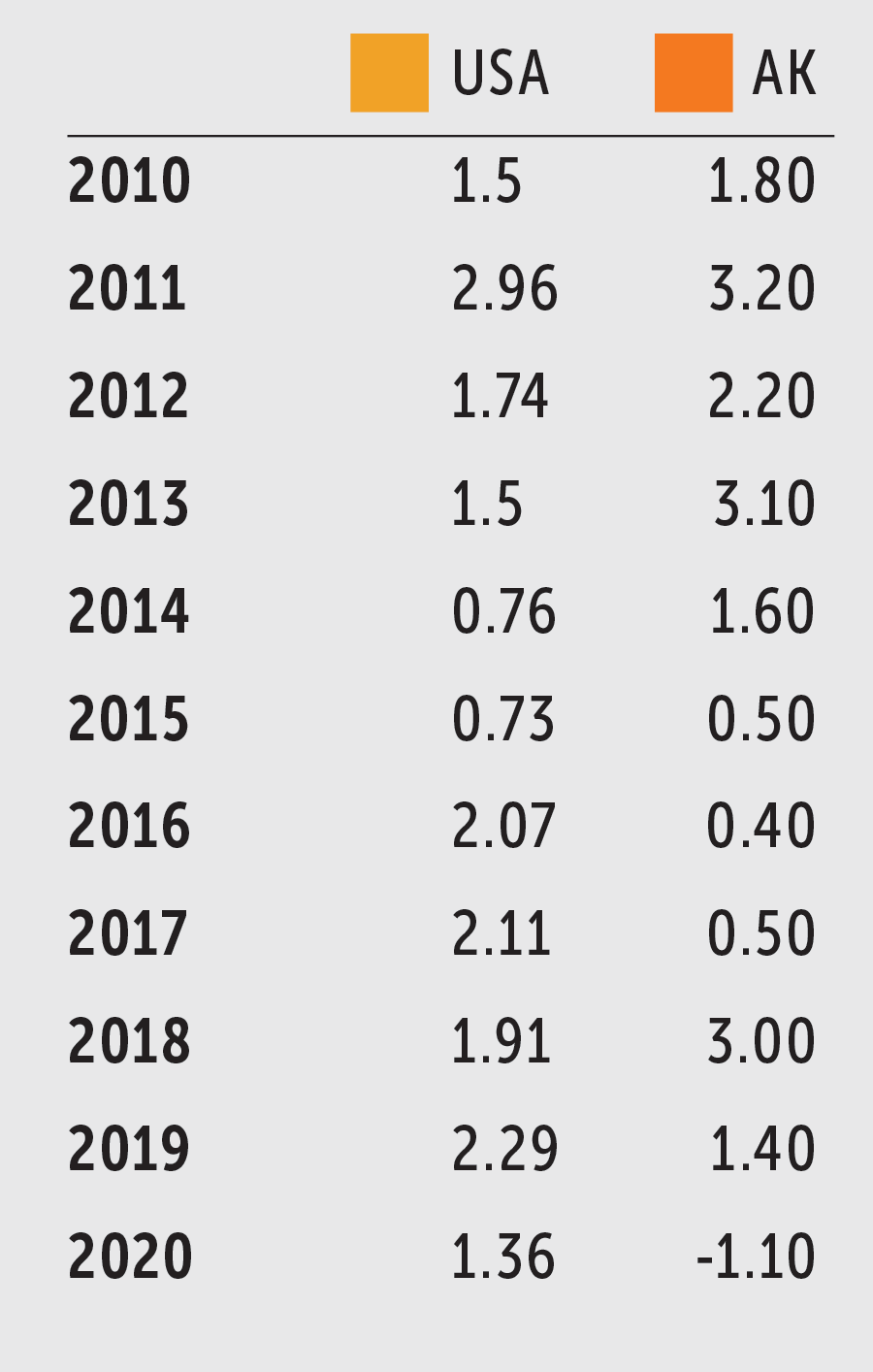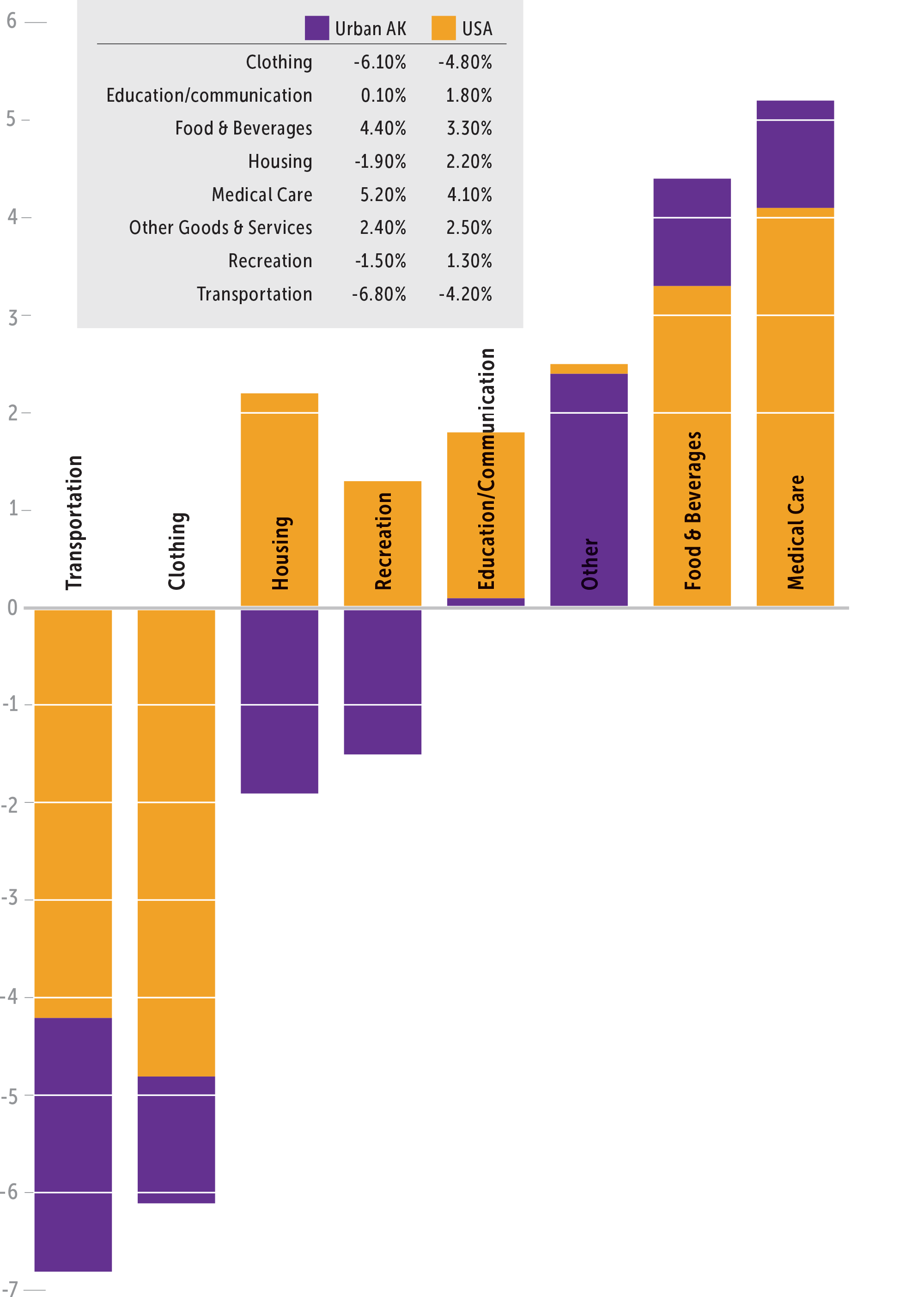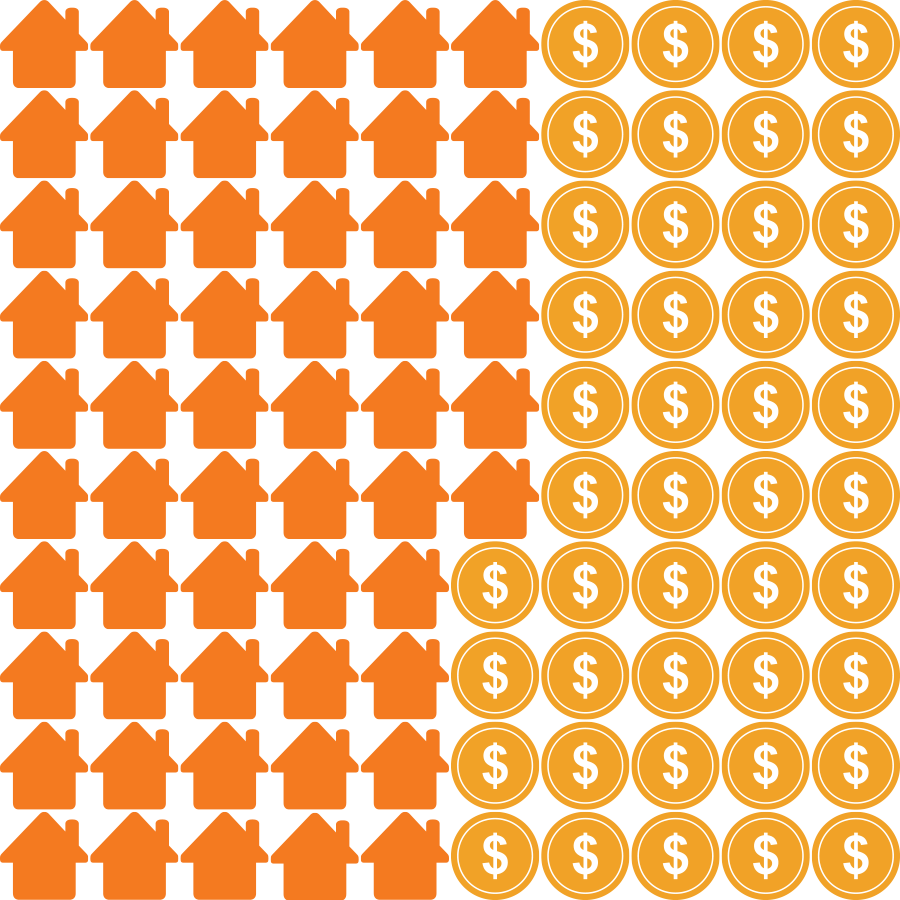Alaska Trends
hile vaccination rates in Alaska continue to soar, total prices consumers paid for goods and services in 2020 moved in the opposite direction.
The CPI, or Cost Price Index, measures the average change in prices paid by consumers for a market basket of goods and services over a period of time. According to Department of Labor Economist Neal Fried, it is the most applied cost-of-living statistic in the state that is used to adjust a variety of rates including collective bargaining agreements and minimum wage.
And as revealed in the Department of Labor’s March Economic Trends report, the CPI for urban Alaska experienced a 1.1 percent decline in 2020—the first time in the history of the state. The deflation was likely a pleasant symptom of an otherwise unpleasant year. And while it’s not expected to continue, we’ll take the small win.



 .3%
.3% 4.4%
4.4%





